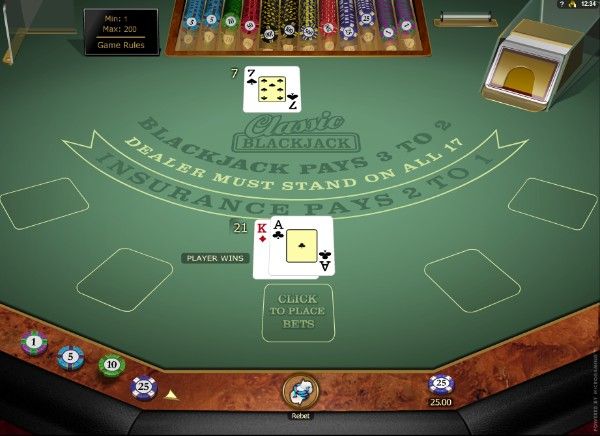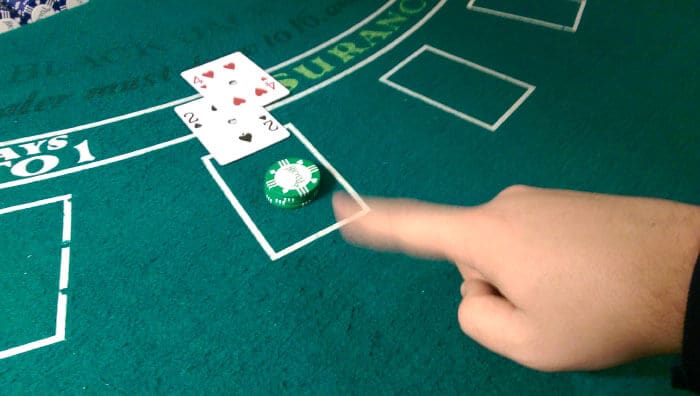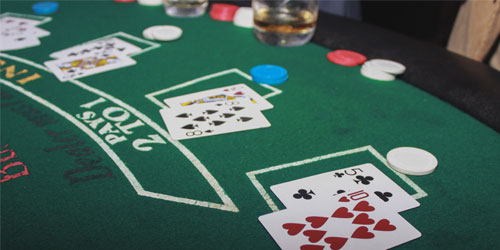What Does Double Down And Split Mean In Blackjack
When to use splitting a pair on blackjack Blackjack double down is one of the most exciting moves to play in blackjack. Blackjack double down allows you to double your bet in the middle of a blackjack hand in exchange for an additional card. Despite how exciting the doubling down option might be, it’s also risky. Blackjack is one of the most popular casino games. Knowing when to hit or stand in the game can reduce the house edge by half, which makes it one of the best casino odds games. This is also true for knowing when to split or double down in the game. What does Hit & Stand mean in Blackjack? Generally, you are allowed to hit or double down on a split hand, with the exception of if you have split two Aces, in which case the two hands are often not allowed to consist of more than two cards. In some cases, a Blackjack achieved on a split hand will not count as such, and simply be valued at 21.
Splittingaces and eights is part of blackjackbasic strategy. Rules vary across gambling establishments regarding resplitting, doubling, multiple card draws, and the payout for blackjack, and there are conditional strategic responses that depend upon the number of decks used, the frequency of shuffling and dealer's cards. However, regardless of the various situations, the common strategic wisdom in the blackjack community is to 'Always split aces and eights' when dealt either pair as initial cards.[1] This is generally the first rule of any splitting strategy.[2]
Splitting[edit]
The object of blackjack is for a player to defeat the dealer by obtaining a total as close to 21 as possible without accumulating a total that exceeds this number.[3] In blackjack, the standard rule is that if the player is dealt a pair of identically ranked initial cards, known as a pair, the player is allowed to split them into separate hands and ask for a new second card for each while placing a full initial bet identical to the original wager with each. After placing the wager for the split hands the dealer gives the player an additional card for each split card. The two hands created by splitting are considered independently in competition against the dealer.[4][5] Splitting allows the gambler to turn a bad hand into one or two hands with a good possibility of winning. It also allows the player to double the bet when the dealer busts.[2] Some rules even allow for resplitting until the player has as many as four hands[4] or allow doubling the bet after a split so that each hand has a bet double the original.[6][7] The standard rules are that when a bet is doubled on a hand, the player is only allowed to draw one more card for that hand.[8][9]
Aces[edit]
A pair of aces gives the blackjack player a starting hand value of either a 2 or a soft 12 which is a problematic starting hand in either case.[2][10] Splitting aces gives a player two chances to hit 21.[11] Splitting aces is so favorable to the player that most gambling establishments have rules limiting the player's rights to do so.[2][10] In most casinos the player is only allowed to draw one card on each split ace.[8][10] As a general rule, a ten on a split ace (or vice versa) is not considered a natural blackjack and does not get any bonus.[6] Prohibiting resplitting and redoubling is also common.[2] Regardless of the payout for blackjack, the rules for resplitting, the rules for doubling, the rules for multiple card draws and the dealer's cards, one should always split aces.[10][12][13]
What Does Double Down And Split Mean In Blackjack Terms

Eights[edit]
If a player is dealt a pair of eights, the total of 16 is considered a troublesome hand. In fact, the value 16 is said to be the worst hand one can have in blackjack.[10] Since sixteen of the other fifty cards have a value of 10 and four have a value of 11, there is a strong chance of getting at least an 18 with either or both split cards. A hand totaling 18 or 19 is much stronger than having a 16.[6] Splitting eights limits one's losses and improves one's hand.[10][11][12] Probabilistic research of expected value scenarios shows that by splitting eights one can convert a hand that presents an expected loss to two hands that may present an expected profit or a reduced loss, depending on what the dealer is showing.[14] A split pair of eights is expected to win against dealer upcards of 2 through 7 and to lose less against dealer upcards of 8 through ace.[15] If a player hits on a pair of eights, he is expected to lose $52 for a $100 bet. If the player splits the eights, he is expected to lose only $43 for a $100 bet.[16]
History[edit]
Blackjack's 'Four Horsemen' (Roger Baldwin, Wilbert Cantey, Herbert Maisel and James McDermott), using adding machines, determined that splitting eights was less costly than playing the pair of eights as a 16.[17] They were part of a 1950s group that discovered that strategy could reduce the house edge to almost zero in blackjack.[18] Now a typical strategy involves the following sequence of playing decisions: one decides whether to surrender, whether to split, whether to double down, and whether to hit or stand.[19]
One of the earliest proponents of the strategy of splitting eights is Ed Thorp, who developed the strategy on an IBM 704 as part of an overall blackjack strategic theory published in Beat the Dealer: A Winning Strategy for the Game of Twenty-One in 1962.[18][20][21] Thorp was the originator of the card counting system for blackjack.[18]
Notes[edit]

- ^Gros, p. 60
- ^ abcdeOrtiz, p. 56
- ^Gros, p. 48
- ^ abGros, p. 51
- ^Jensen, pp. 22–23
- ^ abcSchneider, p. 47
- ^Gros, p. 52
- ^ abSchneider, p. 49
- ^Gros, p. 50
- ^ abcdefJensen, p. 53
- ^ abJensen, p. 56
- ^ abHagen and Wiess, pp. 68
- ^Schneider, p. 48
- ^Hagen and Wiess, pp. 66–67
- ^Scoblete, Frank. 'Why Splitting Eights At Blackjack Is An Iron Clad Rule'. Golden Touch Craps. Retrieved 24 July 2009.
- ^Tamburin, Henry (25 October 1999). 'Splitting Aces and Eights'. Casino city Times. Retrieved 24 July 2009.
- ^Snyder, Arnold (2005). 'Blackjack Basic Strategy: Aces and Eights'. Player Magazine (republished).
- ^ abcGros, p. 44
- ^Jensen, p. 51
- ^Thorpe, Beat the Dealer as cited in Snyder, Arnold citation below
- ^Levinger, Jeff (10 February 1961). 'Thorpe, 704 Beat Blackjack'(PDF). The Tech. Retrieved 30 May 2009.
References[edit]
- Dunki-Jacobs, Frits. Betting on Blackjack: A non-counter’s Breakthrough Guide to Making Profits at the Tables. Adams Media. pp. 28–34. ISBN1-58062-951-2.
- Gros, Roger. The Winner's Guide To Casino Gambling. Carlton Books Limited. pp. 44–69. ISBN1-85868-899-X.
- Hagen, Tom & Sonia Weiss (2005). The Everything Blackjack Strategy Book: Surefire ways to beat the house every time. Adams Media. pp. 66–68. ISBN1-59337-306-6.
- Jensen, Marten (2003). Beat Multiple Deck Blackjack. Cardoza Publishing. pp. 22–23, 51–56. ISBN1-58042-069-9.
- Ortiz, Darwin. Casino Gambling For The Clueless. Carol Publishing Group. pp. 55–59. ISBN0-8184-0609-7.
- Schneider, Meg Elaine. The Everything Casino Gambling Book (2nd ed.). Adams Media. pp. 47–49. ISBN1-59337-125-X.
- Thorp, Ed (1966). Beat the Dealer: A Winning Strategy for the Game of Twenty-One. Vintage. ISBN0-394-70310-3.
Splitting is an interesting component of playing Blackjack that allows you to enter two hands in the same round if the first two cards in your initial hand are of the same value. So what is splitting, when can you do it and when should you? Read on to find out.
What is splitting in Blackjack?
A player can split in a round of Blackjack if their opening two cards are of the same value. This means any pair from Ace through to nine and any two cards valued at ten (for instance, a ten and a Queen).

If a player decides to split, they must place a second bet for that round of the same value as their original bet, essentially doubling their stake. The two cards are then treated as the first card of two new independent hands that are played out separately. Should one of these hands become a pair, the player is allowed to split again and enter a third hand whilst tripling their stake, and so on.
Generally, you are allowed to hit or double down on a split hand, with the exception of if you have split two Aces, in which case the two hands are often not allowed to consist of more than two cards. In some cases, a Blackjack achieved on a split hand will not count as such, and simply be valued at 21.
In a game of Blackjack, opportunities to split will likely be rare. You have an approximate 0.5% chance of getting any pair from Aces to nines in your opening two cards, and a 9.4% probability of getting two cards valued at ten.
When to split in Blackjack
It is arguably universally agreed that there are two scenarios in which you should always split: if you have a pair of Aces or a pair of eights.
You must carefully consider if you are going to split in Blackjack.
While you are likely to be prohibited to getting only one more card on two split Aces, this nonetheless presents two separate opportunities to get Blackjack. There will be an approximate 30.4% chance of a hand starting on an Ace getting Blackjack, equating to a 51.6% probability that at least one of your two hands will do so.
Meanwhile, a pair of eights presents a value of 16. This is widely considered to be the weakest opening hand in Blackjack, by virtue of the fact it is one beneath the minimum value of 17 that the dealer is required to finish on (meaning it is always likely to lose) but has a significant risk of going bust when hitting. Splitting a pair of eights averts this problem.
For a pair of nines, you should split in all circumstances unless the dealer’s face up card is a seven, worth ten or an Ace, in which case you should stand. If the dealer’s face up card is a seven, the most likely outcome is that their second card will be worth ten, meaning they will be forced to finish the round with a hand worth 17, less than your hand’s value of 18.
If the face up card is worth ten or an Ace then they have a chance to get Blackjack, meaning standing on a value of 18 is the option that presents the best chance of winning.
With the exception of pairs of fives, for pairs between two and seven you should look to split when the dealer’s face up card is certain values between two and seven and they are at the greatest risk of going bust. The information discussed in the last few paragraphs is summarised in the table below:
Blackjack splitting strategy
NB: This table assumes four to eight decks in play and that the dealer hits on a soft 17.
When not to split in Blackjack

Under no circumstances should you split on a pair of tens. An opening hand worth 20 is very strong and can only be beat by a Blackjack or a three-card hand worth 21, and the dealer has just an approximate 12.2% chance of getting this in any given round. When splitting a pair of tens, you are likely to end up with two separate hands both worth less than 20, essentially spurning a strong opportunity to win the round by putting yourself at risk of doubling your losses.
You should also never split on a pair of fives. In this situation, the best approach is to double down, as this will provide an approximate 53.8% chance of finishing your turn with a strong hand containing a value of 18 or higher. The exception here is if the dealer’s face up card is worth ten or an Ace and they therefore have a chance to get Blackjack, at which point you should hit.
When To Double Down In Blackjack Chart
For pairs of twos, threes and sevens you should not split if the dealer’s face up card is at least an eight, and for pairs of fours and sixes you should not split if the dealer’s face up card is at least a seven. For pairs of fours, you should also never split if the dealer’s face up card is beneath five, at which point they have a plausible opportunity to build a high value hand via three cards.
Enhance your Blackjack strategy
If you’re looking for general advice on how to play Blackjack, read our guide to Blackjack. If you want to learn more on how to inform your Blackjack strategy, remember to read our articles on how to double down and surrender, alongside how to place a side bet and insurance bet.
We also have an article outlining an advanced Blackjack strategy. If you want to learn more about Blackjack beyond how to play the game, you can read about the history of Blackjack.
Play Blackjack on Pinnacle Casino

Pinnacle has a wide range of Blackjack games for you to enjoy, including Live Blackjack, Classic Blackjack, Vegas Strip Blackjack and many more!